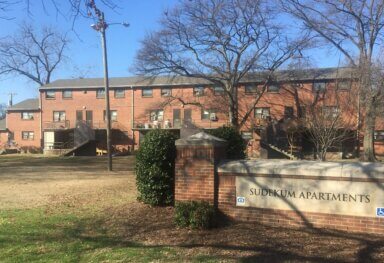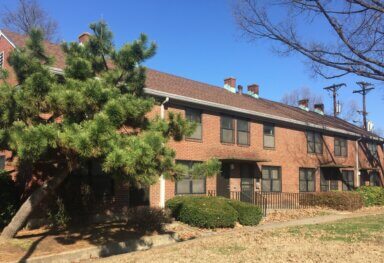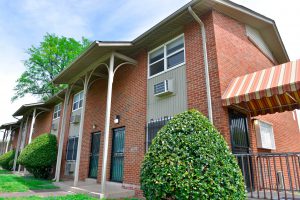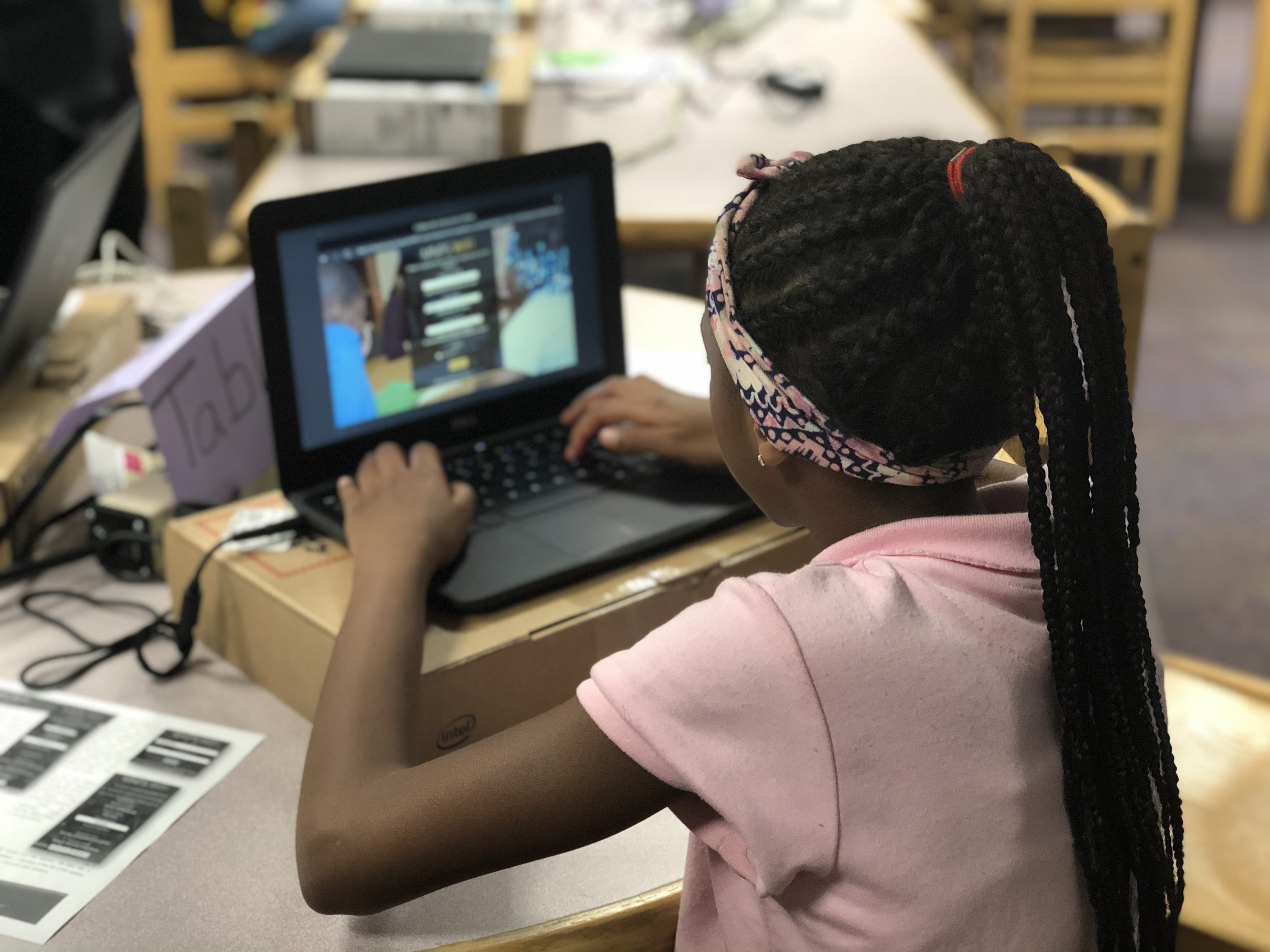 Crossing divides can be intimidating. Obstacles on the path can make progress seem unattainable, and what waits on the other side is unknown. Fortunately, MDHA is participating in a program to help students reach their goals, academically and professionally – and it all starts with the click of a computer mouse.
Crossing divides can be intimidating. Obstacles on the path can make progress seem unattainable, and what waits on the other side is unknown. Fortunately, MDHA is participating in a program to help students reach their goals, academically and professionally – and it all starts with the click of a computer mouse.
The ConnectHome program was first unveiled on a national level by the Obama Administration and the U.S. Department of Housing and Urban Development (HUD) in 2015. Nashville was selected to participate in the initiative, bringing high-speed internet to select MDHA properties.
In early 2019, MDHA Executive Director Jim Harbison announced that MDHA would fund this ConnectHome expansion as part of the Envision Napier and Sudekum (ENS) Transformation Plan. The ENS Plan emerged from a two-year planning process, which calls for a mixed-income, mixed-use community. This ConnectHome expansion into Napier Place and Sudekum Apartments allows MDHA to focus on the Uplifting People part of the plan.
READ MORE: Envision Napier and Sudekum Final Transformation Plan
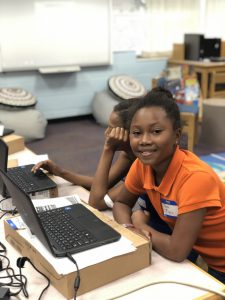 “It seems commonplace for students to have regular access to the Internet from a young age to support their academic endeavors,” Harbison explained. “But, that’s just not the case for many of the children living in the Sudekum Apartments and Napier Place communities.”
“It seems commonplace for students to have regular access to the Internet from a young age to support their academic endeavors,” Harbison explained. “But, that’s just not the case for many of the children living in the Sudekum Apartments and Napier Place communities.”
In October 2019, ConnectHome launched at Napier Enhanced Option Elementary School for students in the 4th grade and their siblings who live in the Napier Place and Sudekum Apartments communities. Fifteen families underwent three days of training, covering topics such as being good digital citizens, safety, security and privacy with volunteers from partner organizations Best Buy and Microsoft. On the last day of training, as students practiced coding small robots with volunteers from Studio NPL, guardians met with Comcast to discuss setting up two years of high-speed Internet covered by MDHA.
On Nov. 1, 2019, the families had completed their digital literacy training. It was time for the students to “graduate” and take their new laptops home. Families walk across Napier Enhanced Option Elementary School’s cafeteria to tables with red table cloths and balloon center pieces as Pomp and Circumstance plays over the speakers. Asya Collier and her son Ka’maurie Collier, who were a part of the first group, came to the stage to share their thoughts.
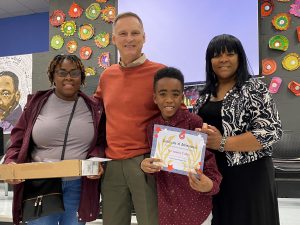
“Thanks to Napier and MDHA, we had the opportunity to attend training classes, and my son received a laptop after completing three classes. He will now be able to do research papers, projects, play games, and I will monitor his daily activity and give him a certain amount of time on the laptop,” said Asya Collier.
Following these remarks, as well as those from Harbison and Napier Enhanced Option Elementary School Principal Dr. Lawless, MDHA staff called parents one-by-one to the front to present the laptops to their children. Overall, 39 laptops were presented to students in 15 families during the ceremony. When ConnectHome at Napier Place and Sudekum Apartments is complete, MDHA will have provided nearly 1,000 laptops as well as two years of free high-speed home internet to school-aged children in the two communities.
“Schools like Napier Enhanced Option Elementary can provide a quality education, but they can’t always equip all our school-aged residents with easy, convenient access to the laptops or high-speed Internet that are nowadays key to a student’s success,” Harbison said. “MDHA heard from the community how important closing that digital divide is, so that’s what we’re doing.”
Following the ConnectHome graduation on Nov. 1, every student left the building carefully carrying their very own brand new laptop, equipped with the knowledge of how to operate it thanks to MDHA staff and volunteers from partnering organizations. In the coming months, as more Napier Place and Sudekum Apartments students participate in the program, it will become more and more obvious that these laptops are more than computers for homework and studying. Instead, they are building blocks that can help build the bridges that will serve them – and their community – today and in the future.
